7.5 Intelligence

Orlando Bloom was first diagnosed with dyslexia at the age of 7. Fortunately, he had a mother who believed in him and a school that allowed him to leave campus and attend special classes to address the issue (Child Mind Institute, 2010c, October 11; Child Mind Institute, 2010d, October 11). But many children are not identified as having dyslexia until they have lost considerable academic ground. Even those who receive an early diagnosis may not get into effective reading programs. Despite such challenges, people with dyslexia can be very successful.
Many great intellectuals have battled dyslexia, among them Nobel Prize winners Pierre Curie, Archer Martin, and Carol Greider (Allen, 2009, October 30); financier Charles Schwab; acclaimed writer John Irving; and the president of the esteemed Cleveland Clinic, Dr. Delos Cosgrove (Shaywitz, 2003). Dyslexia, it turns out, is not a gauge of intelligence (Ferrer, Shaywitz, Holahan, Marchione, & Shawyitz, 2010).
What Is Intelligence?
Generally speaking, intelligence is one’s innate ability to solve problems, adapt to the environment, and learn from experiences. Intelligence relates to a broad array of psychological factors, including memory, learning, perception, and language, and how it is defined often depends on what particular variable is being measured.

In the United States, intelligence is often associated with “book smarts.” We think of “intelligent” people as those who score high on tests measuring academic abilities. But intelligence is more complicated than that—so complicated, in fact, that psychologists have yet to agree on its precise definition. It is not even clear whether intelligence is a single unified entity, or a collection of capabilities.
We do know that intelligence is, to a certain degree, a cultural construct. We have already noted that people in America tend to equate intelligence with school smarts, but this is not the case everywhere in the world. Children living in a village in Kenya, for example, grow up using herbal medicine to treat parasitic diseases in themselves and others. Identifying illness and developing treatment strategies is a regular part of life. These children would score much higher on tests of intelligence relating to practical knowledge than on tests assessing vocabulary (Sternberg, 2004).
Even within a single culture, the meaning of intelligence changes across time. “Intelligence” for modern Kenyans may differ from that of their 14th-century ancestors.
As we explore this topic further, please keep in mind that intelligence does not always go hand in hand with intelligent behavior. People can score high on intelligence measures but exhibit a low level of judgment. Psychologists and educators must be careful to distinguish between test scores and everyday smarts.
Theories of Intelligence
LO 10 Examine and distinguish among various theories of intelligence.
Very early in the history of intelligence measurement, Charles Spearman (1863–1945) speculated that humans have a general intelligence (or g factor), which refers to a singular underlying aptitude or intellectual ability. This g factor, according to Spearman, drives capabilities in many areas, including verbal, spatial, and reasoning competencies. The g factor is the common link.
Multiple Intelligences
Howard Gardner (2011, 1999) suggested that intelligence can be divided into multiple intelligences (Figure 7.5). According to Gardner, there are eight types of intelligences or “frames of mind:” linguistic (verbal), logical-mathematical, spatial, bodily-kinesthetic, musical, intrapersonal, interpersonal, and naturalist. He has proposed that there also may be an existentialist intelligence, but the evidence is, for now, only suggestive (Gardner, 2011; Visser, Ashton, & Vernon, 2006). Take a look at TABLE 7.1 and consider how different occupations might be well suited for individuals who excel in Gardner’s original 7 intelligences.
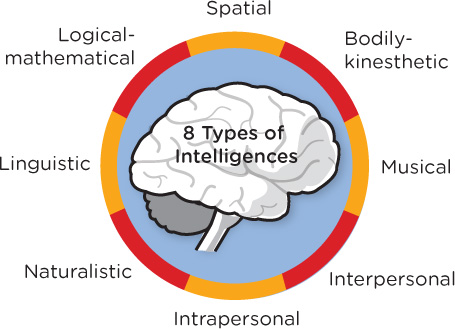
| Logical-mathematical | Scientist Mathematician | Sensitivity to, and capacity to discern, logical or numerical patterns; ability to handle long chains of reasoning. |
| Linguistic | Poet Journalist | Sensitivity to the sounds, rhythms, and meanings of words; sensitivity to the different functions of language. |
| Musical | Composer Violinist | Abilities to produce and appreciate rhythm, pitch, and timbre; appreciation of the forms of musical expressiveness. |
| Spatial | Navigator Sculptor | Capacities to perceive the visual-spatial world accurately and to perform transformations on one’s initial perceptions. |
| Bodily-kinesthetic | Dancer Athlete | Abilities to control one’s body movements and to handle objects skillfully. |
| Interpersonal | Therapist Salesman | Capacities to discern and respond appropriately to the moods, temperaments, motivations, and desires of other people. |
| Intrapersonal | Person with detailed, accurate self-knowledge | Access to one’s own feelings and the ability to discriminate among them and draw upon them to guide behavior; knowledge of one’s own strengths, weaknesses, desires, and intelligences. |
| This table reprinted with permission from Gardner and Hatch (1989) presents Gardner’s original 7 intelligences. Each intelligence has associated strengths and capabilities. | ||
| SOURCE: GARDNER AND HATCH (1989). | ||
According to Gardner (2011), partial evidence for multiple intelligences is apparent in people with brain damage. Some mental capabilities are lost, whereas others remain intact, suggesting that they are really distinct categories. Further evidence for multiple intelligences (as opposed to just a g factor) comes from observing people with savant syndrome. Individuals with savant syndrome generally score low on intelligence tests but have some area of extreme singular ability (calendar calculations, art, mental arithmetic, and so on). Interestingly, the majority of individuals with savant syndrome are male (Treffert, 2009).
Some psychologists question whether these abilities qualify as intelligence, as opposed to skills. Critics contend that there is little empirical support for the existence of multiple intelligences (Geake, 2008; Waterhouse, 2006).
The Triarchic Theory of Intelligence
Robert Sternberg (1988) proposed three kinds of intelligence. Sternberg’s triarchic theory of intelligence(trī-är-kik) suggests that humans have varying degrees of analytical, creative, and practical competencies (Figure 7.6). Analytic intelligence refers to our capacity to solve problems. Creative intelligence represents the knowledge and skills we use to handle new situations. Practical intelligence includes our ability to adjust to different environments.
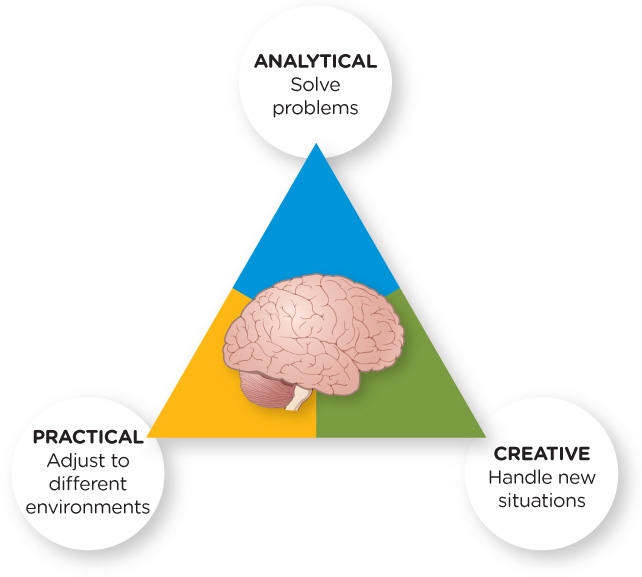
Let’s take a moment and see how the triarchic theory of intelligence relates to Dr. Jill Bolte Taylor. Following the stroke, Dr. Jill struggled with what Sternberg referred to as analytic intelligence, or the ability to solve problems. She did, however, demonstrate evidence of creative intelligence, using knowledge and skills to handle new situations. While recovering at the hospital, Dr. Jill had routine meetings with a doctor who regularly gave her three things to remember and then asked her to recall them on his way out. Since the stroke had dismantled much of Dr. Jill’s memory system, she found this assignment nearly impossible. But on one particular day, she was dead set on remembering the assigned items: firefighter, apple, and 33 Whippoorwill Drive. Using all her available brain power, she recited the words over and over in her mind, but when the doctor finally quizzed her, she could not remember the “33” part of 33 Whippoorwill Drive. She did, however, come up with a creative theoretical solution: She told the doctor that she would walk down Whippoorwill Drive and knock on every door until she identified the house (Taylor, 2006).
Dr. Jill: Did you undergo any psychological treatment during your recuperation?
Following her stroke, Dr. Jill also maintained some degree of practical intelligence, the ability to adjust to her surroundings. Her world was thrown into turmoil by the stroke, but she developed pragmatic coping mechanisms to deal with the novelty of it all. Quickly realizing that talking to people and watching television caused mental exhaustion, she and G.G. decided to limit these overstimulating activities so that her brain could heal in tranquility. This practical strategy turned out to be a key component of her recovery (Taylor, 2006).
Needless to say, there are different ways to conceptualize intelligence (TABLE 7.2), none of which appear to be categorically “right” or “wrong.” Given these varied approaches, you might expect there are also many tools to measure intelligence. Let’s explore several ways psychologists assess intellectual ability.
| Theory | Advantages | Further Thoughts |
|---|---|---|
|
Spearman’s general intelligence (g) There is a general intelligence driving abilities in many areas. |
There is a connection among different abilities such as verbal, spatial, and reasoning competencies. | Given the complexity of the mind, can intelligence really be explained by a single general factor? |
|
Gardner’s multiple intelligences There are eight types of intelligences, which go beyond academic smarts and scholarship. |
Linguistic, logical-mathematical, spatial, bodily-kinesthetic, musical, intrapersonal, interpersonal, and naturalist are “frames of mind” that allow humans to succeed. | What differentiates intelligence from skills? |
|
Sternberg’s triarchic theory Humans have varying degrees of analytical, creative, and practical competencies. |
Analytic intelligence allows us to solve problems, creative intelligence represents knowledge and skills used to handle new situations, and practical intelligence includes the ability to adjust to different environments, all of which can be assessed. | Are each of these areas separate, or do they share something in common (like a g factor)? |
| A summary of the main theories of intelligence, each with its own set of strengths and other considerations. | ||
Measuring Brainpower
LO 11 Describe how intelligence is measured and identify important characteristics of assessment.
Recall that Orlando was 7 years old when he was diagnosed with dyslexia. Around the same time, he took an intelligence test and scored very high (Child Mind Institute, 2010c, October 11). Tests of intelligence generally aim to measure aptitude, or a person’s potential for learning. On the other hand, measures of achievement are designed to assess acquired knowledge (what a person has learned). Many brilliant people with dyslexia have performed poorly on achievement tests, but very well on aptitude tests, demonstrating normal to high intelligence. John Irving, for example, got a low score on the verbal portion of the SAT, and the successful physician Delos Cosgrove performed poorly on the Medical College Admissions Test (Shaywitz, 2003). Fortunately, they did not allow a single test to deter them. The line between aptitude and achievement tests is somewhat hazy, however; most tests are not purely one or the other.
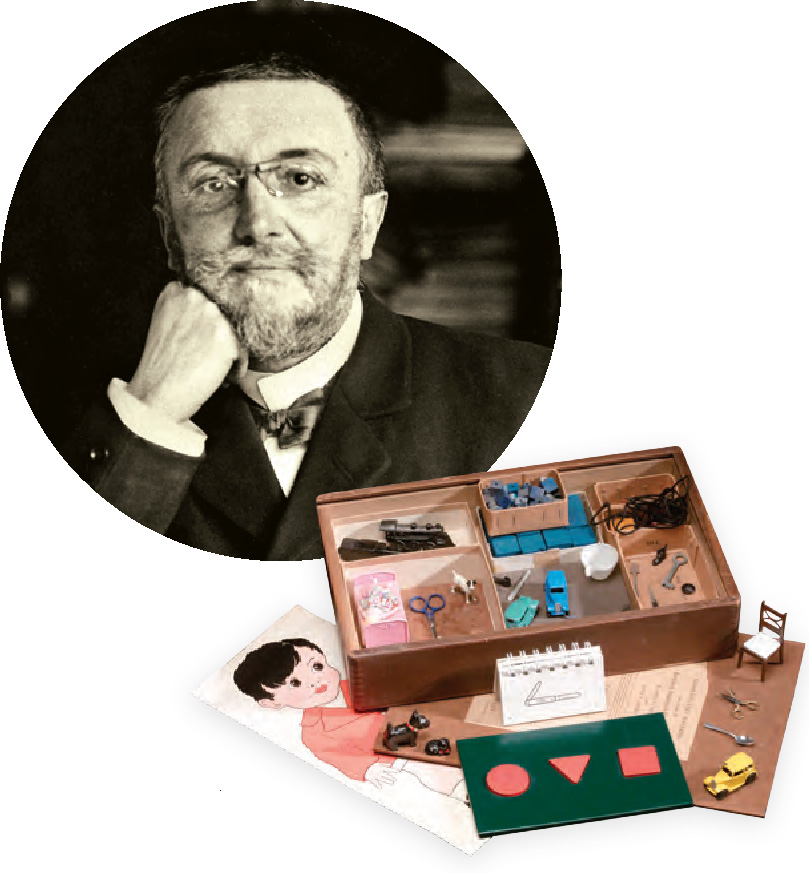
A Brief History of Intelligence Testing
Intelligence testing has an extensive history. In 1904 psychologist Alfred Binet (1857–1911) joined a commission of the French government that sought to create a way to identify students who might have trouble learning in regular classroom settings. A new French law had recently required school attendance by all children. The Minister of Public Instruction recognized that this transition would be difficult because some French children had never attended school. For the law to be implemented successfully, it was necessary to identify who had potential to succeed. A measure was needed to predict the performance of these schoolchildren (Fancher & Rutherford, 2012; Watson, 1968).
Binet worked with one of his students, Théodore Simon, to construct an assessment of intelligence. They studied Binet’s daughters and Parisian schoolchildren, coming up with the 30 items in the original assessment. These items were designed to be of increasing difficulty, starting with a simple test to see if a child could follow a lit match that the tester moved in front of her. The items became more difficult as testing progressed (explaining how paper and cardboard are different, making rhymes with words; Fancher & Rutherford, 2012).
Binet and Simon assumed that children generally follow the same path of intellectual development. Their primary goal in creating their assessment was to compare the mental ability of an individual child with the mental abilities of other children of the same age. They would determine the mental age (MA) of an individual child by comparing his performance to that of other children in the same age category. For example, a 10-year-old boy with average intellectual abilities would score similarly to other 10-year-old children and thus would have a mental age of 10. An intelligent 10-year-old boy would score better than other 10-year-old children and thus have a higher mental age (for example, a mental age of 12) compared to his chronological age. Similarly, a child who was intellectually slower would have a mental age lower than his chronological age. Although Binet and Simon’s measure of intelligence was groundbreaking at the time, it had many shortcomings that were eventually addressed by others.
One of the problems with relying on mental age as an index is that it cannot be used to compare intelligence levels across age groups. For example, you can’t use mental age to compare the intelligence levels of an 8-year-old girl and a 12-year-old girl. In 1912, William Stern solved this problem by devising the intelligence quotient (IQ), providing a way to compare intelligence across ages. To calculate IQ, a child’s mental age is divided by her chronological age and multiplied by 100. A 10-year-old girl with a mental age of 8 would have an IQ score of (8 ÷ 10) × 100 = 80. If her mental age and chronological age were the same, her IQ would be 100. The IQ score can be used to compare the level of intelligence of this 10-year-old girl with children of other ages.
This method does not apply to adults, however. It wouldn’t make sense to give a 60-year-old man who scores the same as a 30-year-old man an IQ score of 50 (that is, 30 ÷ 60 × 100 = 50). Modern intelligence tests still assign a numerical score (which we continue to refer to as “IQ”), although they no longer use the actual quotient score.
The Stanford–Binet Test
American psychologist Lewis Terman (1916) revised Stern’s work so that Binet’s test could be used in the United States, where it came to be known as the Stanford–Binet. Terman changed some items, added items, developed standards based on American children, and extended the test to include teens and adults. The Stanford–Binet Intelligence Scales, as it is now known in its fifth edition (Roid, 2003), includes the assessment of verbal and nonverbal abilities (for instance, defining words, tracing paths in a maze). The Stanford–Binet yields an overall score for general intelligence, as well as scores relating to more specific abilities, such as knowledge, reasoning, visual processing, and working memory (Becker, 2003).
The Wechsler Tests
In the late 1930s, David Wechsler began creating intelligence tests for adults (Anastasi & Urbina, 1997). Wechsler noted that the Stanford–Binet was designed exclusively for children. And although many had been using the Stanford–Binet with adults, it was not an ideal measure, given that adults might not react positively to the questions geared to the daily experiences of school-age children. The Wechsler Adult Intelligence Scale (WAIS) was published in 1955 and has since been revised numerous times (1981, 1997), with the most recent revision in 2008 (WAIS–IV). In addition to creating assessments for adults, Wechsler also developed scales for older children (Wechsler Intelligence Scale for Children, WISC–IV) and younger children (Wechsler Preschool and Primary Scale of Intelligence, WPPSI–III).
The Wechsler assessments of intelligence consist of a variety of subtests designed to measure different aspects of intellectual ability. The 10 subtests on the WAIS–IV target four domains of intellectual performance: verbal abilities, perceptual reasoning, working memory, and processing speed. Results from the WAIS–IV include an overall IQ score, as well as scores on the four domains. Psychologists look for consistency among the domain scores and subtest scores. Substantial inconsistency may suggest an issue that should be further explored, such as a reading or language disability. In the United States, Wechsler tests are now used more frequently than the Stanford–Binet.
Let’s Test the Intelligence Tests
As you read about the history of intelligence assessment, did you wonder how effective those early tests were? We hope so, because this would indicate you are thinking critically about the construct of intelligence and how it is measured. Psychologists make great efforts to ensure the accurate assessment of intelligence, paying close attention to three important characteristics: validity, reliability, and standardization.
Validity
One primary characteristic of a measure of intelligence is validity. This is the degree to which the assessment measures what it intends to measure. We can assess the validity of a measure by comparing its results to those of other assessments that have been found to measure the factor of interest. In addition, we determine the validity of a measure by seeing if it can predict what it is designed to measure, or its predictive validity. Thus, to determine if an intelligence test is valid, we would check to see if the scores it produces are consistent with those of other intelligence tests. A valid intelligence test should also be able to predict future performance on tasks related to intellectual ability.
Reliability
Another important characteristic of assessment is reliability, the ability of a test to provide consistent, reproducible results. If given repeatedly, a reliable test will continue producing the same types of scores. If we administer an intelligence test to an individual, we would expect (if it is reliable) that the person’s scores will remain consistent across time. We can also determine the reliability of an assessment by splitting the test in half and then determining whether the findings of the first and second halves of the test agree with each other. It is important to note that it is possible to have a reliable test that is not valid. For this reason, we always have to determine both reliability and validity.
Standardization
In addition to being valid and reliable, a good intelligence test provides standardization. Perhaps you have taken a test that measured your achievement in a particular area (for example, an ACT or SAT), or an aptitude test to measure your innate abilities (for example, an IQ test). Upon receiving your scores, you may have wondered how you performed in comparison to other people in your class, your college, or your state. Most aptitude and achievement tests allow you to make these judgments through the use of standardization. Standardization occurs when test developers administer a test to a large sample of people and then publish the average scores, or norms, for specified groups. The test developers provide these norms using a sample that is representative of the population of interest. It is important that the sample include a variety of individuals who are similar to the population using the test. This allows you to compare your own score with people of the same age, gender, socioeconomic status, or region. With test norms, you are able to make judgments about the relative performance (often provided as percentiles) of an individual compared to others with similar characteristics.

It is also critical that assessments are given and scored using standard procedures. This ensures that no one is given an unfair advantage or disadvantage in terms of testing conditions. Intelligence tests are subject to tight control. The public does not have access to the questions or answers, and all testing must be administered by a professional. What about those IQ tests found on the Internet? They simply are not valid due to lack of standardization.
The Normal Curve
Have you ever wondered how many people in the population are really smart? Or perhaps how many people have average intelligence? With aptitude tests like the Wechsler assessments and the Stanford–Binet, we can predict what percentage of the population will have scores between two intervals by using a normal curve, which depicts the frequency of values along a continuum (Infographic 7.4). The normal curve is symmetrical and shaped like a bell. The highest point on the graph reflects the average score.
The normal curve shown in Infographic 7.4 portrays the distribution of scores for the Wechsler tests. As you can see, the mean or average score is 100. As you follow the horizontal axis, notice that the higher and lower scores occur less and less frequently in the population. A score of 145 or 70 is far less common than a score of 100, for example.
One final note about the normal curve is that it applies to a variety of characteristics, including IQ, height, weight, and personality characteristics, and that we use it to make predictions about these characteristics. Consult Appendix A for more information on the normal curve and a variety of other topics associated with statistics.
But Are They Fair?
A major concern with intelligence tests is that IQ scores consistently differ across certain groups of people. For example, researchers have reported that Black Americans in general score lower on intelligence tests than do White Americans. The difference in the average of these two groups is around 10 to 15 IQ points (Ceci & Williams, 2009; Dickens & Flynn, 2006). Group differences are also apparent for East Asians, who score around 6 points higher than average White Americans, and for Hispanics, who score around 10 points lower than average White Americans (Rushton & Jensen, 2010). Although researchers disagree about what causes these gaps in IQ scores, they are in general agreement that there is no evidence to support a “genetic hypothesis” (Nisbett et al., 2012). Instead, researchers generally attribute these group differences to environmental factors.
The evidence for environmental influence is strong and points to a variety of factors that contribute to this gap in IQ scores. One adoption study, for example, found that Black and mixed-race children adopted by White families had significantly higher IQ scores than did Black and mixed-race children who were adopted by Black families (Moore, 1986). This indicates strongly that differences in household environments accounted for disparities in IQ scores. Another likely environmental explanation for the IQ gap is stress (Nisbett et al., 2012). Research suggests that Black families often live in more stressful environments than White families. Chronic stress can have a negative impact on the function of the brain, particularly those areas responsible for attention and memory (short-term, long-term, and working memory), which are vulnerable to sustained high levels of stress (McEwen, 2000).
CONNECTIONS
In Chapter 6, we discussed the biology of memory, exploring areas of the brain responsible for memory formation and storage (hippocampus, cerebellum, and amygdala) as well as changes at the level of the neuron (long-term potentiation). Here, we note that stressful environments can impact the functioning of the memory system.
Socioeconomic status (SES) is yet another important variable to consider. The disproportionate percentage of minorities in the lower strata may, in fact, mask the critical issue of environmental factors and their relationship with IQ. For example, children raised in homes with lower SES tend to watch more TV, have less access to books and technology, and are not read to as often. In addition, individuals with lower SES often live in disadvantaged neighborhoods and have limited access to quality schools (Hanscombe et al., 2012).
Culture-Fair Intelligence Tests
It has not yet been determined whether group differences on IQ scores also reflect biases of the tests themselves. Can an assessment be valid for some groups, but not others? For example, are these IQ tests solely aptitude tests, or do they incorporate some level of achievement (learned content)? If that is the case, then people with limited exposure to certain types of test content may be at a disadvantage. Early versions of the IQ tests exhibited some bias against individuals from rural areas, people of lower socioeconomic status, as well as African Americans. Bias may result from language, dialect, or the culture of those who have created the tests (Sattler, 1990; Sternberg, 2004).
To address these problems, psychologists have tried to create culture-fair intelligence tests, designed to measure intelligence without putting people at a disadvantage because of their cultural backgrounds. One way to avoid bias is to use questions that would be familiar to people from a variety of backgrounds. Another approach is to use nonverbal questions. (The Raven’s Progressive Matrices uses this approach; see Figure 7.7) Since intelligence is defined within a culture and tests are created within a culture, some have suggested that we can only create culture-relevant tests, not culture-fair nor culture-free assessments (Sternberg, 2004).

INFOGRAPHIC 7.4: How Smart Are Intelligence Tests?
Tests that claim to measure intelligence are everywhere—online, in your favorite magazine, at job interviews, and in many elementary and secondary schools. But can all of these tests be trusted? The results of an intelligence test aren’t meaningful unless the test is valid, reliable, and fair. But what do those concepts mean, and how can we be sure whether a test is valid, reliable, or fair—let alone all three? Let’s take a look.

Ultimately, IQ tests are good at predicting academic success. They are highly correlated with SATs, ACTs, and GREs, for example, and the correlations are stronger for the higher and lower ranges of IQ scores. Strong correlations help us make predictions about future behavior. Researchers have found, however, that self-discipline may be a better predictor of success than IQ tests (Duckworth & Seligman, 2005).
The study of intelligence is far from straightforward. Assessing a concept with no universally accepted definition is not an easy task, but these tests do serve useful purposes. The key is to be mindful of their limitations, while appreciating their ability to measure an array of cognitive abilities.
The Diversity of Human Intelligence
Once called mental retardation, intellectual disability consists of a delay in thinking, intelligence, as well as social and practical skills, which is evident before age 18. Psychologists can assess intellectual functioning with IQ scores; for example, disability is identified as an IQ below approximately 70 on the Wechsler tests. It can also be assessed in terms of one’s ability to adapt; for example, being able to live independently, and understanding number concepts, money, and hygiene. Although intellectual disability is the preferred term, the phrase “mental retardation” is still used in most laws and policies relating to intellectual disability (Individuals With Disabilities Education Act, 2004; Social Security Disability Insurance; and Medicaid Home and Community Based Waiver; Schalock et al., 2010).
There are many causes of intellectual disability, but we cannot always pinpoint them. According to the American Association on Intellectual and Developmental Disabilities (AAIDD), nearly half of intellectual disability cases have unidentifiable causes (Schalock et al., 2010). We do know the causes for Down syndrome (an extra chromosome in what would normally be the 21st pair), fetal alcohol syndrome (exposure to alcohol while in utero), and fragile X syndrome (a defect in a gene on the X chromosome leading to reductions in protein needed for development of the brain). There are also known environmental factors, such as lead and mercury poisoning, lack of oxygen at birth, various diseases, and exposure to drugs during fetal development.
At the other end of the intelligence spectrum are the intellectually gifted, those who have IQ scores of 130 or above. Above 140, one is considered a “genius.” As you might imagine, very few people—about 2% of the population—are classified as gifted. An even smaller proportion falls in the genius range: only the top 1% of the population (Simonton, 2012). What roles do you think these gifted people take on in our society?
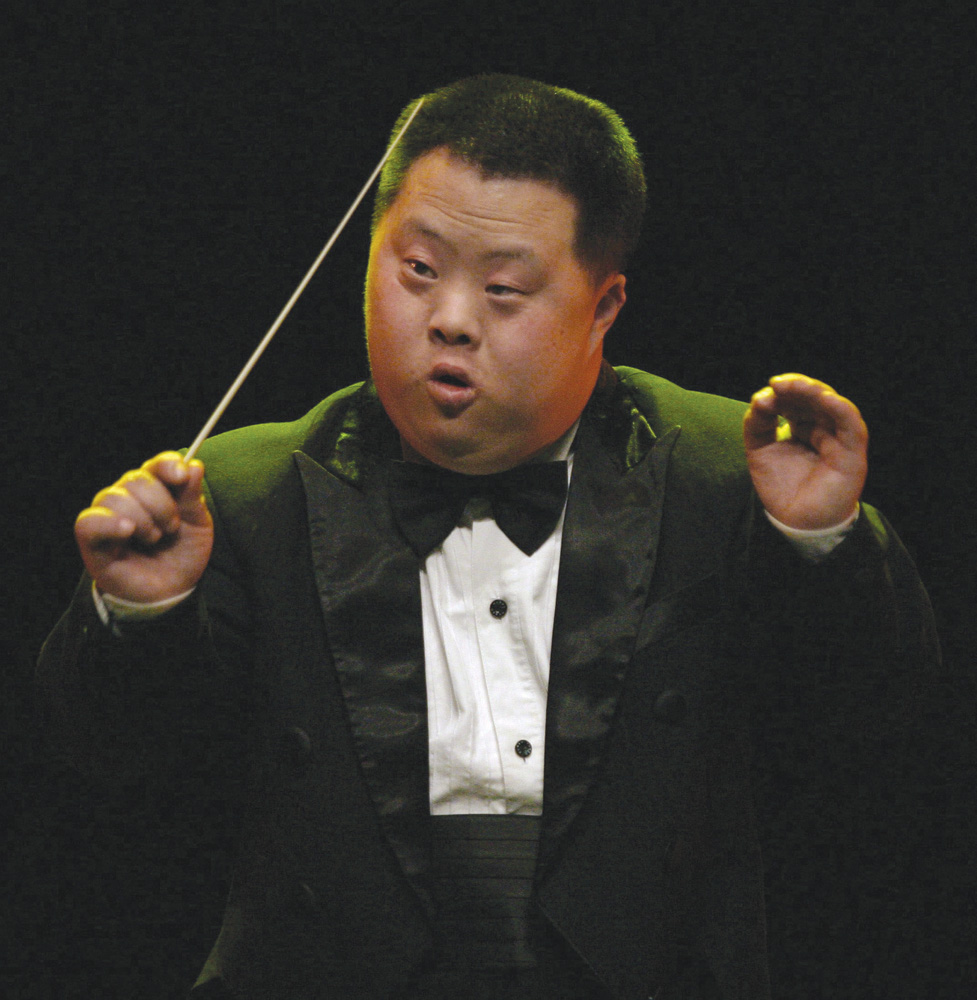
Terman’s Study of the Gifted
American psychologist Lewis Terman was interested in discovering if gifted children could function successfully in adulthood. His work led to the longest-running longitudinal study on genius and giftedness in the early 1900s. This study, formerly called the Genetic Studies of Genius, is now called the Terman Study of the Gifted. Terman (1925) monitored 857 boys and 671 girls with IQs ranging from 130 to 200. These children (known as “Termites”) were well adjusted socially, showed leadership skills, and were physically healthy and attractive, according to Terman and Oden (1947). Following the participants into adulthood, the study found that they earned more academic degrees and achieved more financial success than their non-gifted peers (Fancher & Rutherford, 2012; Holahan & Sears, 1995). But life isn’t all about test scores, and a high IQ score doesn’t guarantee success in all areas of life.
Life Smarts
Some people are better at recognizing and controlling their emotional responses, regardless of how well they might do on an intelligence test. This awareness and control is a component of emotional intelligence, which includes the capacity to perceive, understand, regulate, and use emotions to adapt to social situations. People with emotional intelligence also display the ability to use information about their emotions to direct their behavior in an efficient and creative way (Salovey, Mayer, & Caruso, 2002). Furthermore, emotionally intelligent people are self-aware and can properly judge how to behave in social situations.
According to Goleman (1995), emotional intelligence has a major impact on everyday functioning. Someone with high emotional intelligence shows self-control; has the ability to manage anger, impulsiveness, and anxiety. She exhibits empathy, awareness of emotions, and persistent self-motivation. Research suggests that emotional intelligence is related to performance on the job and at school (MacCann, Fogarty, Zeidner, & Roberts, 2011). An example of someone with emotional intelligence is Dr. Jill Bolte Taylor.
DR. JILL’s NEWFOUND INTELLIGENCE
 It took Dr. Jill 8 years to recuperate from what she now calls her “stroke of insight,” and it was not smooth sailing. Regaining her physical and cognitive strength required painstaking effort. “Recovery was a decision I had to make a million times a day,” she writes (Taylor, 2006, p. 115). Every step along the way, Dr. Jill made a conscious effort to apply herself to the task of recovery, and her steadfast determination made all the difference. She also had many people cheering her on—family and friends who had faith in her brain’s plasticity, or ability to repair and rewire (Taylor, 2006).
It took Dr. Jill 8 years to recuperate from what she now calls her “stroke of insight,” and it was not smooth sailing. Regaining her physical and cognitive strength required painstaking effort. “Recovery was a decision I had to make a million times a day,” she writes (Taylor, 2006, p. 115). Every step along the way, Dr. Jill made a conscious effort to apply herself to the task of recovery, and her steadfast determination made all the difference. She also had many people cheering her on—family and friends who had faith in her brain’s plasticity, or ability to repair and rewire (Taylor, 2006).
If stroke victims fail to regain all faculties by 6 months, they never will. At least that is what Dr. Jill remembers hearing her doctors say. But she proved all the naysayers wrong. Within 2 years, Dr. Jill was living back in her home state of Indiana and teaching college courses in anatomy/physiology and neuroscience. Four years after the operation, she had retrained her body to walk gracefully and her brain to multitask. By Year 5, she could solve math problems, and by Year 7, she had accepted another teaching position, this time at Indiana University (Taylor, 2006). Today, she is working on book number two, creating a game that helps people with brain trauma, and developing a nonprofit organization for “brain awareness” and education (drjilltaylor.com, 2010).
Dr. Jill has now recovered, but how have the stroke and her response to it affected her life? “Thanks to this stroke,” she writes, “I have become free to explore the world again with childlike curiosity” (Taylor, 2006, p. 147). Dr. Jill has become more open to new experiences and ways of thinking (a prerequisite for creativity), and she has also emerged more empathetic and emotionally aware.
Do you think everyone would respond so positively when faced with such a challenge? Some people seem more resilient and better equipped to deal with life’s trials. Is it something in their nature, or did they learn to cope through experience? Like many topics in psychology, it comes down to nature and nurture. This is true of dyslexia as well.
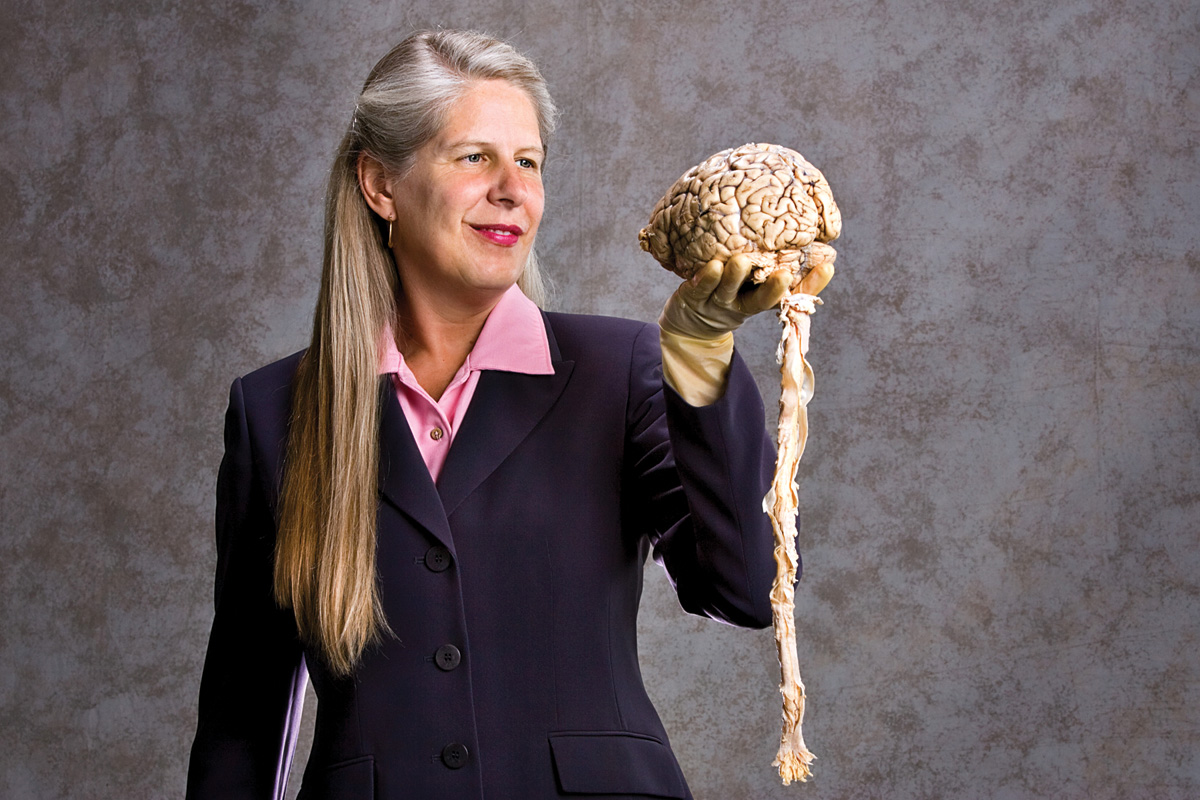
nature AND nurture
Why Dyslexia?
 We don’t have access to Orlando Bloom’s genetic code, and we certainly are not in a position to speculate on what caused his dyslexia. In some cases, however, it appears that reading difficulties are written into the genes. Dyslexia is, to a certain extent, inherited. Some of the earliest dyslexia researchers noticed that the condition runs in families, and many studies have confirmed this observation (Fisher & DeFries, 2002). If you have dyslexia and you have children, there is a good chance one of your kids will develop it as well.
We don’t have access to Orlando Bloom’s genetic code, and we certainly are not in a position to speculate on what caused his dyslexia. In some cases, however, it appears that reading difficulties are written into the genes. Dyslexia is, to a certain extent, inherited. Some of the earliest dyslexia researchers noticed that the condition runs in families, and many studies have confirmed this observation (Fisher & DeFries, 2002). If you have dyslexia and you have children, there is a good chance one of your kids will develop it as well.
But genes aren’t the whole story. Your genetic code provides a blueprint for the development of a human brain and body—not the finished product. Just as nutrition can affect the growth of a child’s bones and muscles, early learning experiences can shape cognitive development. Strong reading, for example, is fostered by a variety of factors, including providing children with access to books, activities that help them understand phonemes (rhyming and other word games), and good schooling (Shaywitz, 2003).
DYSLEXIA CAN BE TRACED TO ATYPICAL CONNECTIONS IN THE BRAIN….
The nurture side of the coin even has value for adults, whose brains are still receptive to training. Dyslexia can be traced to atypical connections in the brain, and, specifically, decreased activity in various areas, including the left parietotemporal region. fMRI research suggests this region can be awakened when a person with dyslexia receives intensive phonological training and learns to read more efficiently (Eden et al., 2004). The takeaway: Nature isn’t everything. With proper intervention (nurture), the brain of someone with dyslexia can begin to behave more like the brain of an average reader (Shaywitz, 2003).
Origins of Intelligence
While we are on the topic of nature and nurture, let’s examine how these two forces impact intelligence in general. Twin studies (research involving identical and fraternal twins) are an excellent way to examine the relative weights of nature and nurture for virtually any psychological trait. The Minnesota twin studies (Johnson & Bouchard, 2011; McGue, Bouchard, Iacono, & Lykken, 1993) indicate there are strong correlations between the IQ scores of identical twins—stronger than the correlations between the IQ scores of fraternal twins or other siblings. In other words, the closer the degree of the genetic relationship (identical twins have identical genes), the more similar their IQ scores are. This suggests that genes play a major role in determining intellectual abilities. According to the Minnesota twin studies, identical twins’ IQ scores have correlations as high as .86 (remembering that ±1.00 is a perfect correlation) (Figure 7.8).

Heritability refers to the degree to which heredity is responsible for a particular characteristic or trait. As psychologists study the individual differences associated with a variety of traits, they try to determine the heritability of each one. Many traits have a high degree of heritability (for example, eye color, height, and other physical characteristics), but others are determined by the environments in which we are raised (for example, manners; Dickens & Flynn, 2001). Results from twin and adoption studies suggest that heritability for “general cognitive abilities” is about 50% (Plomin & DeFries, 1998; Plomin, DeFries, Knopik, & Niederhiser, 2013). In other words, about half of the variation in intellectual or cognitive ability can be attributed to genetic make-up, and the other half to environment.
It is important to emphasize that heritability applies to groups of people, not individuals. We cannot say, for example, that an individual’s intelligence level is 40% due to genes and 60% the result of environment. We can only make general predictions about groups and how they are influenced by genetic factors (Dickens & Flynn, 2001).
We have now explored the various approaches to assessing intelligence. Let’s shift our focus to a quality that is associated with intelligence but far more difficult to measure.
Creativity
LO 12 Define creativity and its associated characteristics.
Do you remember the last time you encountered a situation or problem that required you to “put on your thinking cap”? Sometimes it takes a little creativity to solve a problem. In a problem-solving situation, creativity is the ability to construct valuable results in innovative ways. While not exclusively linked, creativity and intelligence are correlated, and a basic level of intelligence is necessary for creativity to flow. For example, you need to have a certain level of intelligence to generate original ideas, as opposed to just more ideas (Benedek, Franz, Heene, & Neubauer, 2012; Nusbaum & Silvia, 2011).
Most psychologists agree that there are several basic characteristics associated with creativity (Baer, 1993; Sternberg, 2006a, 2006b):
- Originality: the ability to come up with unique solutions when trying to solve a problem
- Fluency: the ability to create many potential solutions
- Flexibility: the ability to use a variety of problem-solving tactics to arrive at solutions
- Knowledge: a sufficient base of ideas and information
- Thinking: the ability to see things in new ways, make connections, see patterns
- Personality: characteristics of a risk taker, who perseveres and tolerates ambiguity
- Intrinsic motivation: influenced by internal rewards, motivated by the pleasure and challenge of work
Because it doesn’t present itself in a singular or uniform manner, creativity is difficult to measure. One way to assess creativity is to add up the number of times an individual exhibits the four characteristics of originality, fluency, flexibility, and elaboration in a problem-solving situation and then use these data to create a creativity score (Baer, 1993).
Divergent and Convergent Thinking
Divergent thinking is an important component of creativity. It refers to the ability to devise many solutions to a problem (Baer, 1993). A classic measure of divergent thinking is the unusual uses test (Guilford, 1967; Guilford, Christensen, Merrifield, & Wilson, 1960; Figure 7.9). A typical prompt in the unusual uses test would ask the test taker to come up with as many uses for a brick as she can imagine. (What ideas do you have? Paperweight? Shot put? Stepstool?) Remember that we often have difficulty thinking about how to use familiar objects in atypical ways because of functional fixedness.
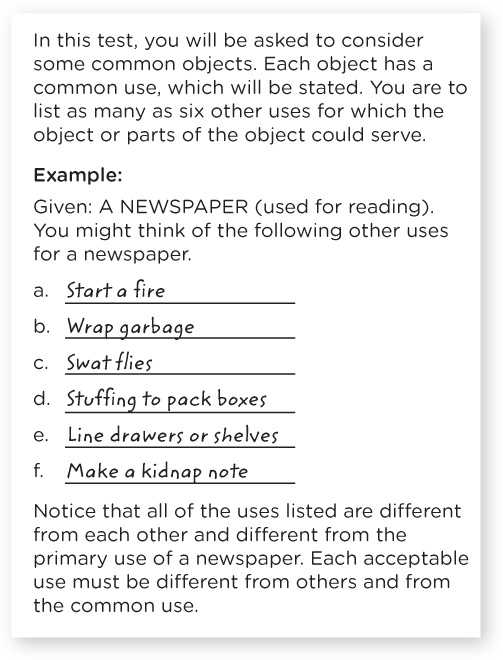
In contrast to divergent thinking, convergent thinking focuses on finding a single best solution by converging on the correct answer. With this type of thinking, we fall back on previous experience and knowledge. This conventional approach to problem solving leads to one solution, but, as we have noted, many problems have multiple solutions.
Creativity comes with many benefits. People with this ability tend to have a broader range of knowledge and interests. They are open to new experiences and tend to be uninhibited in thoughts and behaviors (Feist, 2004; Simonton, 2000). The good news is that we can become more creative by practicing divergent thinking, taking risks, and looking for unusual connections between ideas (Baer, 1993).
Sometimes finding those new connections takes a little relaxing on the part of the brain. Let’s see how this phenomenon might come into play by peering into the brain of a rapper.
didn’t SEE that coming
Inside the Brain of a Rapper
 How long would it take you to come up with a rhyme that looks something like this?
How long would it take you to come up with a rhyme that looks something like this?
I shine and glow, even in the dark,
Stay smart, stay sharp, as a harp,
Played by a musician in this position,
Feel blessed to make the whole world listen,
And just glisten without even trying
Even when I die, I won’t stay dead,
And it’s straight off the head,
And it’s straight out the lungs,
Looking fly, fresh, old man, so young
(Mos Def, 2011)
Hip-hop artist Mos Def came up with these rhymes off the top of his head one night at a club in New York City. He was freestyle rapping alongside fellow performer Kanye West (“freestyle” means to invent lyrics in the moment—no cheat sheets involved, no memorizing the night before). In a true freestyle session, rappers essentially create poetry as it flows from their mouths. An amazing cognitive feat, don’t you think? Something special must be going on in the brain of a rapper in order for freestyle to occur.
MOS DEFINITELY CREATIVE!

Researchers have studied the brains of freestyle rappers as they “flow,” or “spit rhymes,” and they have discovered an interesting pattern of excitement and calmness in different areas of the brain. Using fMRI, Siyuan Liu and colleagues (2012) compared the brain activity of rappers as they freestyled and performed lyrics they had rehearsed. Freestyle sessions were correlated with greater activity in language-processing hot spots on the left side of the brain—not surprising, given the extraordinary language demands of improvisational rhyming. There was also heightened activity in an area of the frontal lobes known as the medial prefrontal cortex (MPFC) and a quieting down of another area known as the dorsolateral prefrontal cortex (DLPFC). This calming down of the DLPFC, which receives and filters input from the MPFC about internal intentions, may effectively relax the rules about which intentions are turned into action, setting the stage for creativity. “Letting go,” it seems, is an essential part of the creative process.
Closing Thoughts
From freestyle rap to near-fatal brain hemorrhages—we certainly have covered a lot of ground in this chapter. It is now time to wrap things up. Let’s review the major topics. We began our discussion by defining cognition and saw what happens when cognitive processes are derailed, using the story of Dr. Jill Bolte Taylor as an example. Then we explored the many dimensions of language. Drawing on the insights of actor Orlando Bloom, we discovered how minor differences in language processing pave the way for dyslexia. Finally, we explored the concept of intelligence, examining the various ways psychologists define and evaluate it.
Although you have reached the end of this chapter your study of cognition is far from over. In the pages to come, we will explore intelligence in relation to age (Chapter 8), and gender (Chapter 10), and a host of cognitive processes related to social interactions (Chapter 15). As you continue your journey in this book, you will see cognition popping up everywhere. Cognitive processes underlie perception, memory, behavior, and most every psychological phenomenon you can imagine.
show what you know
Question 7.15
1. Sternberg believed that intelligence is made up of three types of competencies, including.
- linguistic, spatial, musical.
- intrapersonal, interpersonal, existentialist.
- analytic, creative, practical.
- achievement, triarchic, prototype.
c. analytic, creative, practical.
Question 7.16
2. Some tests of intelligence measure _________, or a person’s potential for learning, and other tests measure _________, or acquired knowledge.
aptitude; achievement
Question 7.17
3. Define IQ. How is it derived?
The intelligence quotient (IQ) is a score from an intelligence assessment, which provides a way to compare levels of intelligence across ages. Originally, an IQ score was derived by dividing mental age by chronological age and multiplying that number by 100. Modern intelligence tests still assign a numerical score, although they no longer use the actual quotient score.
Question 7.18
4. According to findings from the Minnesota twin studies, the _________ for intelligence is around 50%. This means that around half of the population-wide variation in intellectual ability may be attributed to genetic make-up.
- heritability
- standardization
- divergent thinking
- average
a. heritability
Question 7.19
5. An artist friend of yours easily comes up with unique solutions when trying to solve problems. This _________ is one of the defining characteristics of creativity.
originality